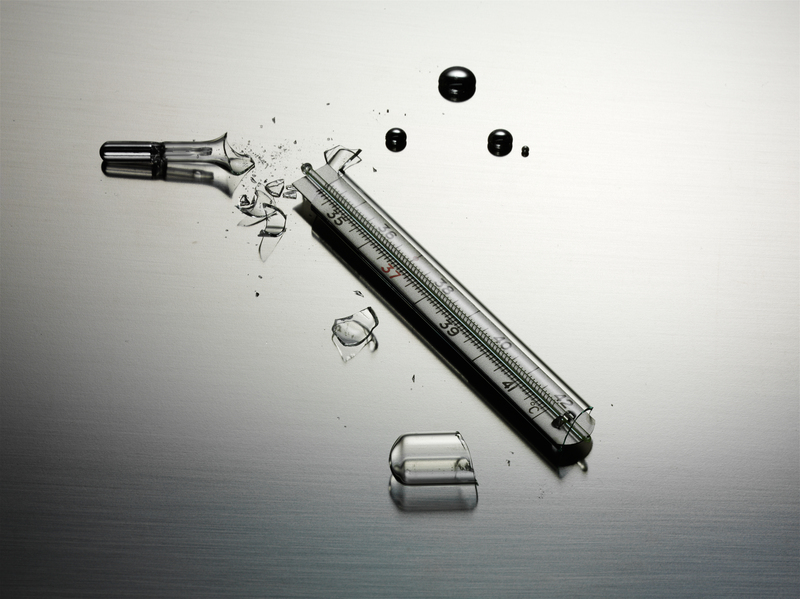How to Educate Kids About Safe PPE Waste Disposal
Personal Protective Equipment (PPE) has become an essential part of daily life, especially since the emergence of global health concerns like the COVID-19 pandemic. While adults might be well-versed in the use and disposal of PPE, educating children about safe PPE waste disposal is crucial for maintaining community health and environmental sustainability. Teaching kids the correct methods to dispose of masks, gloves, face shields, and other protective gear not only minimizes health risks but also instills lifelong eco-conscious habits.
Why Is Safe PPE Waste Disposal Important for Kids?
Children are naturally curious and often unaware of the dangers posed by used PPE. Improper disposal can result in the spread of germs, contamination, and pollution, directly impacting their well-being and that of those around them. By imparting knowledge about responsible PPE waste management, we build a generation that is health-aware and environmentally responsible.
Key Reasons to Teach Kids PPE Waste Disposal
- Prevents the Spread of Disease: Used masks and gloves can harbor harmful pathogens.
- Protects the Environment: PPE waste, when not properly discarded, can contribute to plastic pollution.
- Encourages Good Hygiene: Proper disposal habits reinforce cleanliness and self-care.
- Empowers Responsible Citizenship: Children who learn about safe disposal become more responsible community members.

Understanding PPE: What Needs Safe Disposal?
Before delving into PPE waste disposal education for kids, it's essential to clarify what PPE items require special attention. Common protective equipment used by children includes:
- Face Masks (disposable, surgical, cloth with disposable filters)
- Gloves (disposable latex, nitrile, vinyl)
- Face Shields
- Sanitizing Wipes
All these items can become contaminated after use and must be disposed of thoughtfully to avoid health and environmental hazards.
Step-by-Step: How to Teach Kids About Safe PPE Waste Disposal
Educating children requires creativity, patience, and consistency. Use the following comprehensive strategies to guide them on proper PPE waste management.
1. Explain the Risks of Improper Disposal
Start by discussing what happens when PPE is not thrown away correctly. Use age-appropriate language, emphasizing:
- The spread of germs: "Germs can stay on used masks and gloves and make people sick."
- Environmental pollution: "Throwing masks on the ground can hurt animals and the planet."
You can use fun illustrations or simple stories to make the message relatable.
2. Demonstrate Proper PPE Removal
Safe PPE disposal begins with safe removal. Teach kids not to touch the front of masks or the outside of gloves. Show them:
- How to remove PPE by the straps or edges
- To avoid contact with their face during removal
- To wash hands immediately after removing PPE
3. Show the Right Bin for PPE Waste
Labelling waste bins with colorful signs or stickers helps kids identify where to throw used PPE. Use a dedicated bin, ideally with a lid, and remind them:
- PPE waste should never go in the recycling bin
- Sanitizing wipes and disposable masks belong in the PPE waste bin
If your area has specialized PPE disposal programs, involve children in learning about the local system.
4. Use Fun and Repetitive Learning
Children learn best by repetition and engagement. Try the following ideas:
- Role-playing games: Play "dispose the mask" game with stuffed animals and toy PPE.
- Songs and rhymes: Invent a catchy tune about throwing away used gloves and washing hands.
- Craft projects: Make a poster together illustrating the steps to safe PPE waste disposal.
5. Visual Aids and Demonstrations
Use videos, diagrams, and posters to reinforce disposal routines. For younger kids, stickers and charts where they can track "good disposal" habits work wonders. Encourage visual reminders in bathrooms, entryways, and classrooms.
6. Foster Questions and Regular Discussions
Allow time for kids to ask questions and share what they notice about PPE waste when out in public. Discuss why sometimes people forget and how they can help by reminding others kindly.
7. Reinforce with Positive Feedback
Recognize kids' efforts in following PPE disposal guidelines. Praise, small rewards, or a simple "well done" can motivate them to make the right choices consistently.
Addressing Common Challenges in PPE Waste Disposal Education for Kids
While most children are eager to learn, you may encounter some obstacles:
Overcoming Fear or Disinterest
- Use empathy: Acknowledge that PPE can look strange or scary.
- Make it relatable: Draw comparisons with familiar routines (like brushing teeth).
Managing Peer Influence
- Encourage leadership: "You can show your friends how to use the PPE bin!"
- Share positive stories about other kids who are PPE disposal superheroes.
Maintaining Consistency
- Have consistent disposal routines at home, in school, and during extracurricular activities.
- Collaborate with teachers and caregivers for uniform messaging.
How Schools and Communities Can Support Safe PPE Waste Disposal Education
Though parents play a key role, schools, community centers, and activity groups must also take part in promoting responsible PPE disposal habits:
School Initiatives
- Install clearly marked PPE-only waste bins in classrooms and hallways.
- Incorporate PPE disposal techniques into science and health curriculums.
- Hold awareness weeks or art competitions focusing on PPE waste reduction.
Community Programs
- Distribute educational flyers and posters in public spaces.
- Organize family workshops teaching safe PPE and general waste disposal.
- Partner with local waste management to host interactive sessions or field trips.
Environmental & Health Impacts of Improper PPE Disposal
It's important that children understand not only the "how," but the "why" of safe PPE waste disposal. Outline how littered PPE can:
- Endanger wildlife which may ingest or become entangled in discarded masks and gloves
- Contribute to microplastic contamination in soil and water sources
- Pose persistent public health threats through the spread of disease
Using real-world examples or news stories can make these consequences more tangible for kids.
Resources: Making Safe PPE Waste Disposal Second Nature
Utilize books, online resources, and educational videos tailored to children. Consider incorporating these into learning:
- "Germs Are Not for Sharing" by Elizabeth Verdick
- Government health websites with infographics for kids
- Cartoon animations on YouTube about PPE use and waste
Some local waste management authorities offer free resources or guest speaker programs for schools.
Teaching Kids About Reusable PPE Alternatives
Part of responsible PPE waste disposal is discouraging single-use items when possible. Explain to kids how reusable cloth masks and washable face coverings reduce waste. Show them:
- How to safely store, wash, and reuse cloth masks
- The environmental benefits of cutting down on single-use PPE
User-friendly tools such as mask-washing charts and personalized mask bags can help younger children manage their reusable gear.
Age-Appropriate PPE Waste Disposal Education
Tailor your approach to the child's age and maturity level:
- Toddlers: Use basic instruction ("Only throw masks in the special bin!"), bright visuals, and simple actions.
- Primary/Elementary Schoolers: Add context about germs and the environment; encourage participation in class or group activities.
- Pre-teens/Teens: Provide more details on environmental and social impact; involve them in advocacy and school programs.
Ways to Make PPE Waste Disposal a Habit
Forming new habits relies on clear, consistent reinforcement. Consider these strategies:
- Set up reminder posters near disposal points at home and school
- Designate a "PPE monitor" role in classrooms to encourage peer-led responsibility
- Track progress with sticker charts or digital apps
- Involve kids in setting up new disposal stations or helping with regular reminders

PPE Waste Disposal FAQs for Kids and Parents
- Can masks be recycled?
Most disposable masks, gloves, and wipes cannot be recycled in regular bins. They should go in the trash or PPE-specific waste bins. - What if there is no special bin?
Place used PPE in a small plastic bag, tie it securely, and put it in the general waste. Never flush PPE down toilets! - Should we wash hands after touching used PPE?
Always wash hands after removing or handling used masks and gloves, even if using disposal bins. - Is it safe to touch someone else's used PPE?
Never touch others' used PPE. Ask an adult for help if you see masks or gloves left behind.
Conclusion: Building Healthy, Safe, and Environmentally Responsible Habits
Empowering kids with the knowledge of safe PPE waste disposal is an investment in public health and environmental sustainability. By making disposal routines accessible, age-appropriate, and engaging, parents, teachers, and communities can foster habits that protect both people and the planet.
Start the conversation today, lead by example, and celebrate every small act of responsible PPE waste management your child demonstrates.
Key Takeaways
- Explain risks and demonstrate solutions clearly
- Use visual aids, games, and positive reinforcement
- Make information accessible and consistent across home, school, and community
- Encourage questions, discussions, and leadership roles
- Reinforce the importance of hand hygiene after PPE disposal
Together, we can help create a cleaner, safer world--one mask, glove, and teaching moment at a time.
